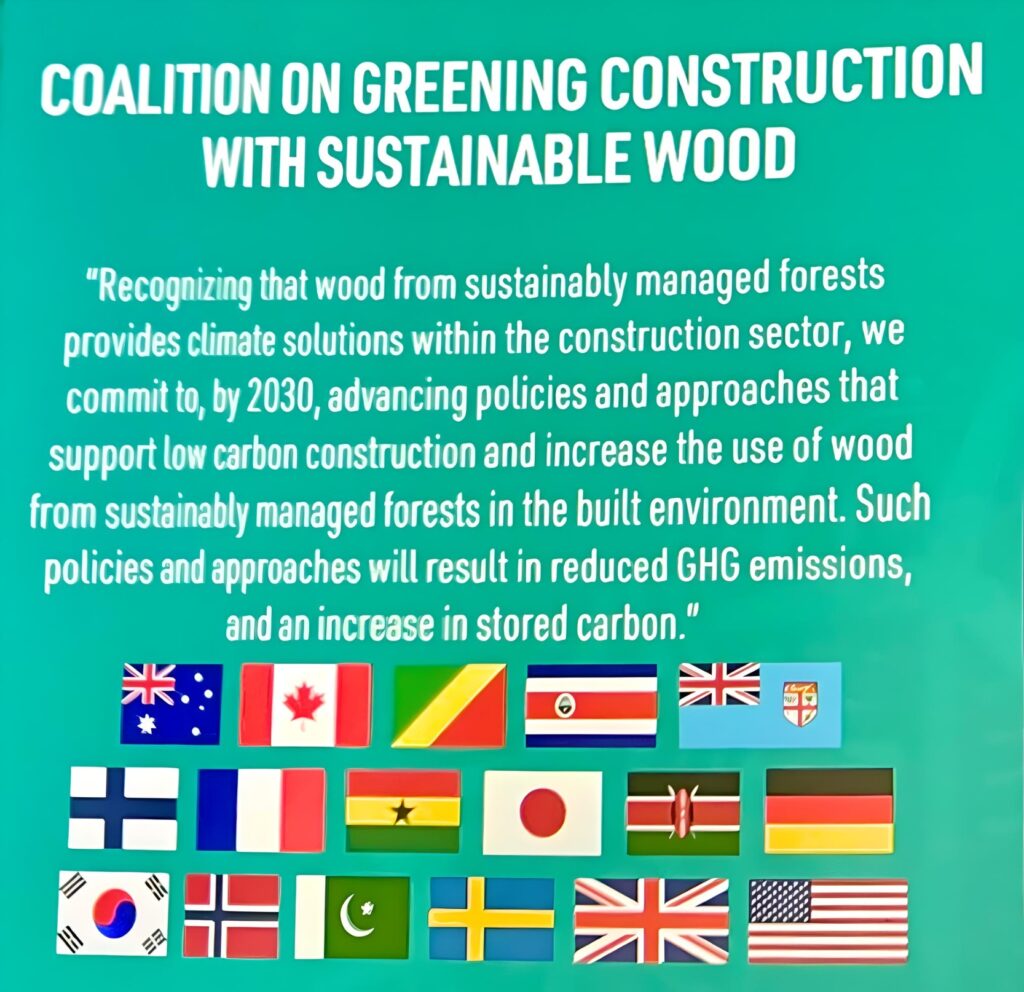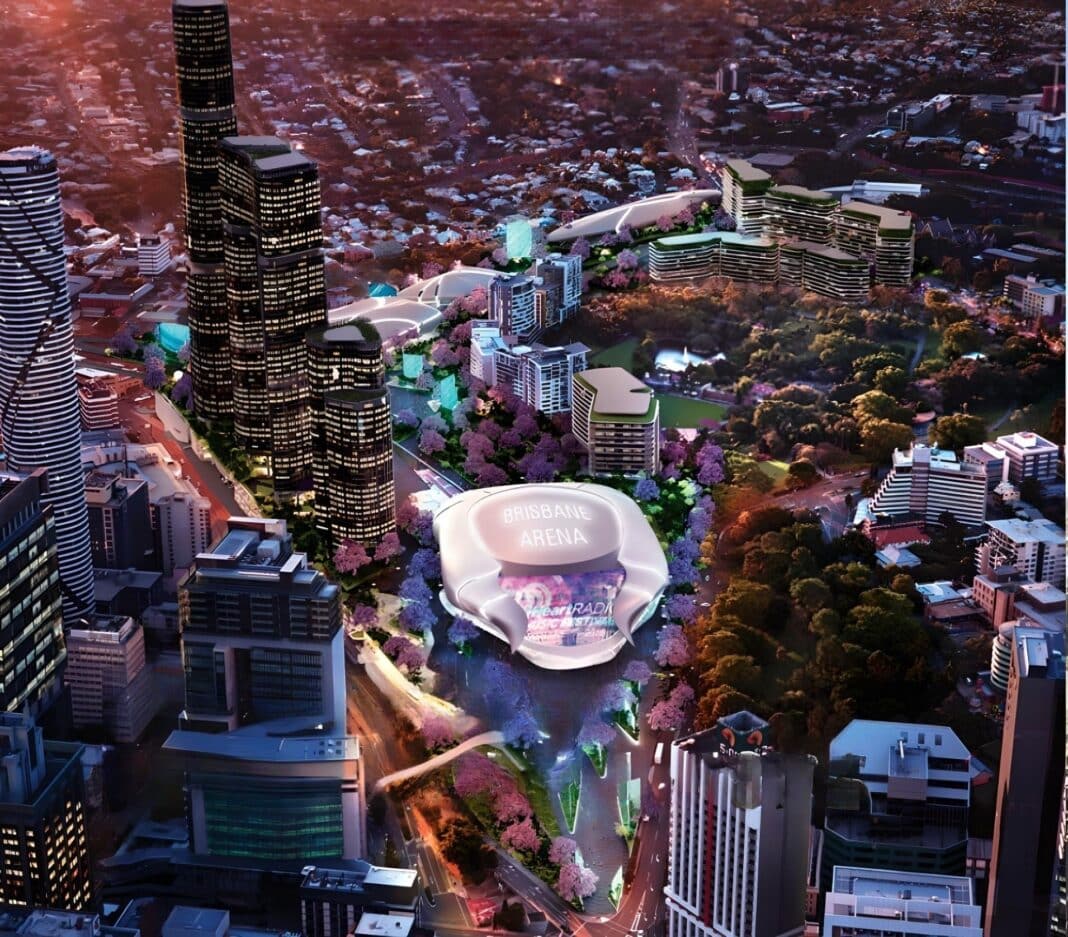The Brisbane Olympics is still nine years away, but planning is in overdrive as organisers prepare to spend AU of $7.1 billion (or US $4.9 billion) on infrastructure in the lead-up to the 2032 showpiece event.
Last month, Wood Central reported that the Queensland Government – which has entered into a 50/50 funding agreement with the Australian Government – has settled on an AU $2.7 billion total rebuild of the Gabba Stadium as part of a greater East Bank Urban Precinct.
However, whilst the venue has been confirmed, the choice of construction materials remains uncertain.
When Brisbane secured the games, it committed to delivering the first “climate-positive” games in Olympic history and is now subject to new IOC rules, where infrastructure must be “thrifty,” “renewable”, and leave a positive legacy post-event.
In recent months, a panel of Australia’s leading architects have lobbied for organisers to look to low-carbon construction materials, like mass timber and blended greenery, to deliver an instantly recognisable and “distinctly Australian” infrastructure.
That’s why Australia’s pledge to increase the use of timber in buildings by 2030 could be transformational for the development of infrastructure for the games and the legacy of the games itself.

Announced at COP28 yesterday, Australia and 16 other countries, including the US, the UK, Canada, Japan, France and Germany, have joined the “Coalition on Greening Construction with Sustainable Wood.”
The coalition “recognises that wood from sustainably managed forests provide climate solutions within the construction sector,” with the group committed to “increase the use of wood from sustainably managed forests in the built environment.”
Significantly, the coalition has agreed to support and promote the use of timber from “sustainable sources”, which Wood Central understands will enhance the use of PEFC and FSC certification within the building and construction industry.
To achieve this, it has pledged to advance public policies in wood production, reduce barriers to using timber in construction, scale up research and development in design and construction and promote greater knowledge transfer between borders.

According to Mick Stephens, CEO of Timber Queensland, in Dubai for COP28, the breakthrough acknowledges the role “timber can play in sequestering carbon, with timber using far less emissions than other materials.”
This is supported by the World Green Building Council, with Davina Rooney, the CEO of the Green Building Council of Australia – one of the world’s largest green building councils – reporting last month that the quest for embodied carbon has led to a surge in timber buildings.
Whilst in Dubai, Mr Stephens spoke to Queensland’s Deputy Premier Stephen Miles, the Minister assisting the Premier on the Olympics and Paralympic Games Infrastructure.
Deputy Premier Miles and Premier Anatasia Palaszczuk oversee the Olympic Delivery Authority and are directly responsible for managing infrastructure projects.
In June, Wood Central revealed that the authority will look to mass timber as one of its preferred construction materials for the Brisbane 2032 Olympic and Paralympic Athlete Villages, with organisers looking to Paris 2024, Milan 2026 and LA 2028 for examples of timber-rich solutions.
Under French law, all new public buildings must use timber as their primary building material, with Wood Central reporting that the Aquatics Centre, Athletes Village, Wrestling and Judo Centres will be constructed out of mass timber construction systems.






